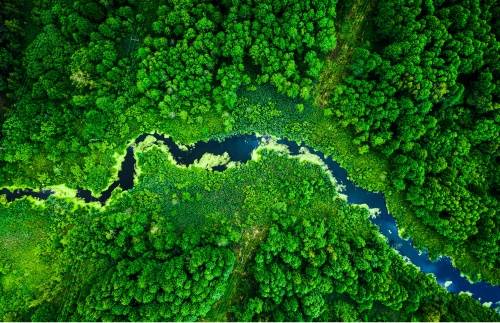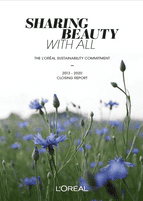For The Planet
L’Oréal for the Future, our sustainability commitments for 2030
Global warming is accompanied by environmental changes that threaten potentially permanent degradation of human and natural habitats. Sea levels, melting glaciers, ocean warming and acidification as well as extreme weather events are on the rise. With higher stakes must come stronger commitments.
This is the reason why L’Oréal has decided to take its efforts even further through a program called “L’Oréal for the Future”. Our commitments towards 2030 mark the beginning of a more radical transformation and embody our view as to what a company’s vision, purpose and responsibilities should be to meet the challenges facing the world.
Transforming our activities to respect the planet’s limits
It is no longer enough for companies to reduce their environmental impact with objectives that are “self-set”. At L’Oréal, our commitment is to ensure that our activities are respectful of the so-called “Planetary Boundaries”, meaning what the planet can withstand, as defined by environmental science.
In order to reconcile our needs with the preservation of a resource-limited planet, we are raising the bar and implementing a new internal transformation program. Unlike the first program, our new commitments will not just focus on our direct impact. They will also tackle our indirect, extended impact, related, for example, to the activity of our suppliers and the use of our products by consumers.
Contributing to solving the challenges of the world

Over the past years, expectations as to what the role of companies should be have changed dramatically. At L’Oréal, we want to take on greater responsibility, go beyond the mere transformation of our business model. With our new sustainability program, we want to demonstrate that companies can be part of the solution to some of today’s most pressing environmental and social challenges.
For this reason, we are allocating 100 million euros to impact investing dedicated to the regeneration of ecosystems and the development of the circular economy, and 50 million euros to a charitable endowment fund to support highly vulnerable women.
About L’Oréal’s sustainability commitments: we are not starting from scratch
Very early on, L’Oréal became aware of the need to respond to environmental challenges. As an industrial company, it decided that tackling the environmental impact of its factories and distribution centers was the most obvious first step, and a necessary one, to begin its transformation process.
- Since 2005, the Group has reduced the CO2 emissions of its plants and distribution centers by 81% in absolute terms, exceeding its initial target of 60% by 2020, while production volume increased by 29% over the same period.
- At the end of 2020, L’Oréal had 72 carbon neutral sites (meaning they use 100% renewable energy), including 19 factories.
In 2013, L’Oréal decided to address the core of its activity: the development of beauty products, its global sustainability program “Sharing Beauty With All’, announcing tangible sustainability goals towards 2020. At its core laid an innovative tool known as SPOT (for Sustainable Product Optimization Tool), made to assess and improve the environmental and social performance of products across all brands. Sustainability is fully integrated into the design process of the Group’s new products, from the earliest stages.
- In 2020, 96% of L'Oréal's new or renovated products had an improved environmental and social profile.
- By end of 2020, L’Oréal had helped 100,905 people from disadvantaged communities find employment through its solidarity purchasing and inclusion programs.
- L’Oréal is the only company in the world to have achieved an “A” score in all three CDP rankings - fighting climate change, managing water sustainably, preserving forests - for 5 years in a row.
Publications & Resources
